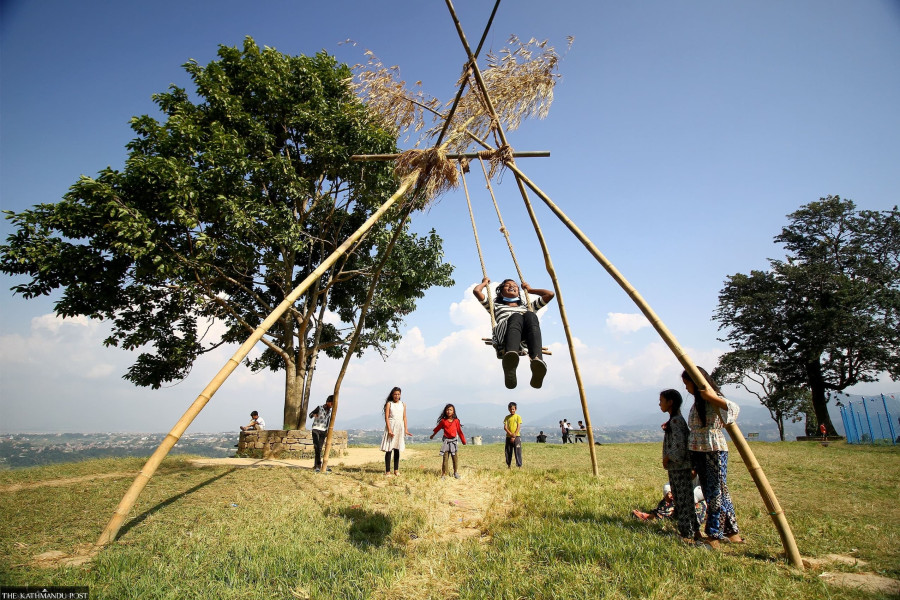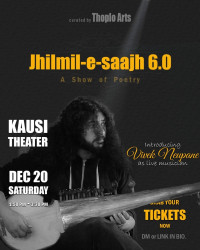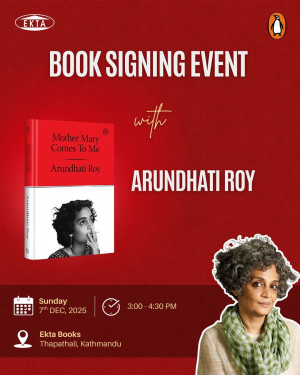Culture & Lifestyle
How a Newa tune became synonymous with Dashain
Believed to have originated in the 16th century, the Malshree dhun has become a part of Nepali cultural heritage symbolising the festivities and joys of Dashain.
Ankit Khadgi
Every Dashain for the last ten years, Rupa Neupane has played the Malshree dhun on her sarod.
During the fifteen days of the Dashain celebration, when the weather is pleasant and the skies are clear, Neupane picks up her sarod and starts playing the tune, relishing the festive mood surrounding the whole country. She often performs the tune in front of a live audience and even for her enjoyment.
“I have been playing the Malshree dhun during Dashain since I started playing the sarod. Even though I play the tune only during Dashain, I never rehearse it. Perhaps it is because I have been playing it for so many years that it comes naturally to me,” says Neupane, a classical musician and one of Nepal’s first women sarod players.
Celebrated by the Hindus, Dashain is one of the major national festivals of the country. The 15-day festival starts from Ghatasthapana and ends on Kojagrat Purnima. During the festival, people worship different manifestations of Goddess Durga.
People building gigantic bamboo swings, colourful kites drifting in the sky, and the sound of Malshree dhun playing are some of the things that represent the arrival of Dashain. As Dashain nears, one can hear the Malshree dhun everywhere—at temples, department stores, on radio and television shows, and these days as caller tunes on phones.
Malshree dhun, a Newa tune, is believed to have originated in the 16th century in Nepa Mandala (ancient Kathmandu Valley).
Since the tune, says Dhrubesh Regmi, a musicologist, gets religiously played during the festival, it has become more popularly known as ‘Dashain music’.
“Malshree dhun has become synonymous with Dashain. If anyone hears the tune, they automatically feel that Dashain has arrived,” he says.
Although the Malshree dhun is one of the oldest surviving tunes in Newa music, culture expert Subarna Shakya says it’s difficult to precisely trace the origin of the tune and how it went on to represent the whole festival.
As per available evidence, Shakya says that the tune might have originated during the reign of Mahindra Malla in the 16th century.
“King Mahindra Malla of Kantipur was known for his devotion towards his subjects. The king was known to take a keen interest in solving the problems his subjects were facing. The king’s subjects created the serene and calming tune to pay respect to their thoughtful king. The tune later went on to widely become known as the Malshree dhun,” says Shakya.
In the Newa community, as every season, month, and jatra has its own song and hymn, the Malshree dhun gained status as the song that represented the festival of Mwohani (Dashain).


"During Dashain, from the kings to ordinary people, everyone started playing the tune using traditional musical instruments while worshipping Durga and her manifestations, due to which it became a devotional tune," says Regmi.
According to Shakya, traditionally, the tune was played using khin baja or mridangam (percussion) instruments.
Neupane, a classical music artist, says that the popularity of the Malshree dhun soared during the reign of Pratap Malla of Kantipur. The king, she adds, even introduced new instruments to play the tune with.
“From the time of Pratap Malla, people started playing the Malshree dhun with sitar and dholak,” she says.
Besides its religious function, the Malshree dhun has also become a symbolic indication of the time and the season it gets played.
The beginning of Dashain is often considered as the beginning of the autumn season.
“Given that the Malshree dhun is played only during Dashain, it has also become associated with the changing season. When people start hearing the tune, they know that the monsoon season has ended and autumn has begun,” says Regmi, a sitarist and professor at Central Department of Fine Arts, Tribhuvan University.
But how did a traditional Newa song that was limited only to the Kathmandu Valley become a national song representing the biggest festival in the country?
Regmi says that it was only after Prithvi Narayan Shah’s invasion of the Kathmandu Valley that the tune started becoming widely popular among the masses as the Shah rulers began using the tune in the army to uplift the soldiers’ spirits.
“When Prithivi Narayan Shah captured the Valley, he didn’t change many traditions and practises of Newa community. As Malshree dhun was used as a devotional song to please the goddess Durga and her many manifestations including Kali, which the sena (army) religiously worshipped, the Shah army also started playing it while worshipping Kali” says Regmi.
“That’s how the song’s reach expanded as wherever the sena went for battles for the ‘unification campaign’, they played it to offer their prayers to Kali. The tune was even played by Gurju ko Paltan (a group of soldiers who lead religious processions playing traditional instruments). The tune also became a part of the ritual performed during the seventh day of Dashain, which is when fulpati (an assortment of auspicious flowers, leaves, and fruits) is brought from Gorkha Durbar to Kathmandu ,” he adds.
How much the Shah rulers valued the Malshree dhun, says Regmi, is evident in a book titled ‘Brihat Raga Malshree’ published in 1912. The book contained a collection of songs composed by Shah rulers like Pratap Singh Shah, Rana Bahadur Shah, Girvan Yuddha Bir Bikram Shah, etc.
“Although all of the songs in the collection were veer rasa, which loosely translates to songs of bravery, they were composed in the Malshree dhun, which shows how the state valued the tune,” says Regmi. “The tune might have started from the Malla period, but it is only after the Shah rule that it went on to become one of the most important elements signifying the festival of Dashain and its culture.”
With time, the list of musical instruments used to play the Malshree dhun has grown as well. People have also used guitar and piano to play the tune. Still, despite the tune's modernised versions, the essence and ethos of the tune hasn’t changed a bit—it still signifies Dashain and the happiness it brings along, says Shakya.
“People now play the Malshree dhun whenever they want to. But I think it’s not the right thing to do,” he says. “The tune represents the start of an important festival and the changing of the season. Unlike any other tune, the Malshree dhun has its distinct cultural value and it is important we preserve it."




 11.12°C Kathmandu
11.12°C Kathmandu















